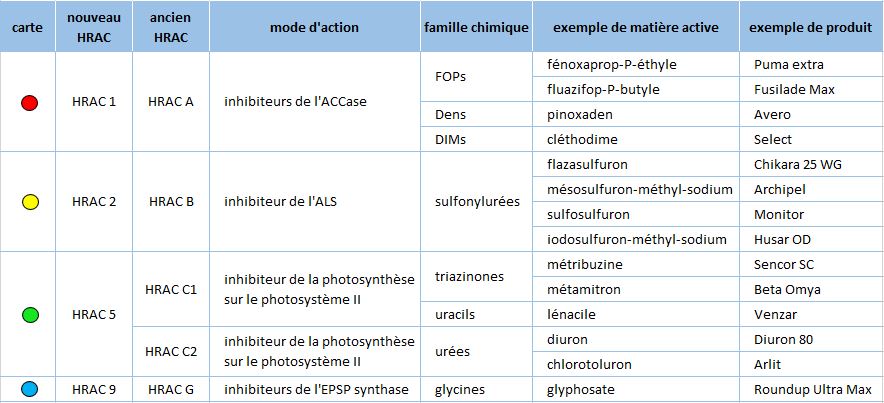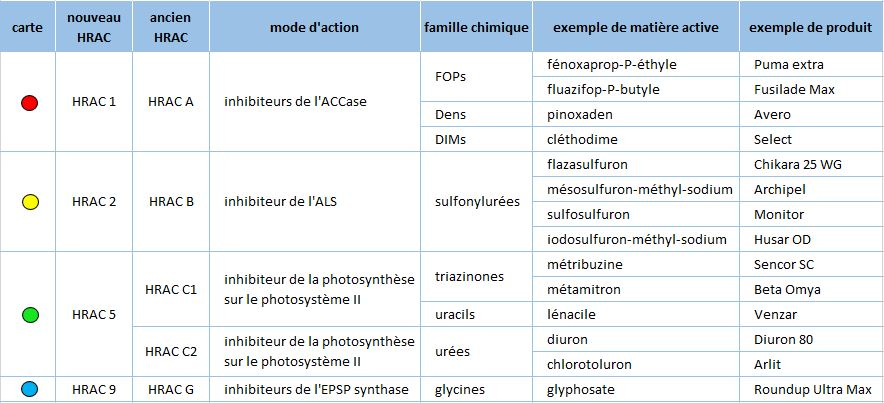The Herbicide Resistance Action Committee (HRAC) classifies herbicides into groups according to their specific biochemical modes of action, with a specific designation for each group. This classification enables the establishment of strategies for preventing the development of specific resistances to each mode of action. In 2020 this classification was revised, and is currently based on a numerical system.
Herbicides generally act by blocking functions that are essential to the development and survival of the target plant. In Switzerland, resistances to four biochemical modes of action have been observed: ACCase inhibitors (HRAC 1), ALS inhibitors (HRAC 2), Photosystem II-photosynthesis inhibitors (HRAC 5) and EPSP synthase inhibitors (HRAC 9).
Resistances can be of two types:
- Target-site resistance (TSR) is due to a mutation in a single gene in the herbicide target in the weed. This leads to increased expression of the target protein or a change in the herbicide binding site. There are molecular tests to detect this type of resistance.
- Non-target-site resistance (NTSR) includes all other mechanisms such as e.g. reduced herbicide penetration in the plant.
From generation to generation, the plants that survive treatment with the herbicide can produce seeds and occupy their ecological niche so completely that this resistance trait is found in almost all individuals of the species in an agricultural plot. The seeds of these plants as well as their pollen can transmit this resistance to neighbouring plots.
Single or multiple resistances
If a weed population is resistant to just one mode of action (or HRAC group) we are dealing with a single resistance. If the population is resistant to two or three different modes of action, we then speak of double and triple resistances.







